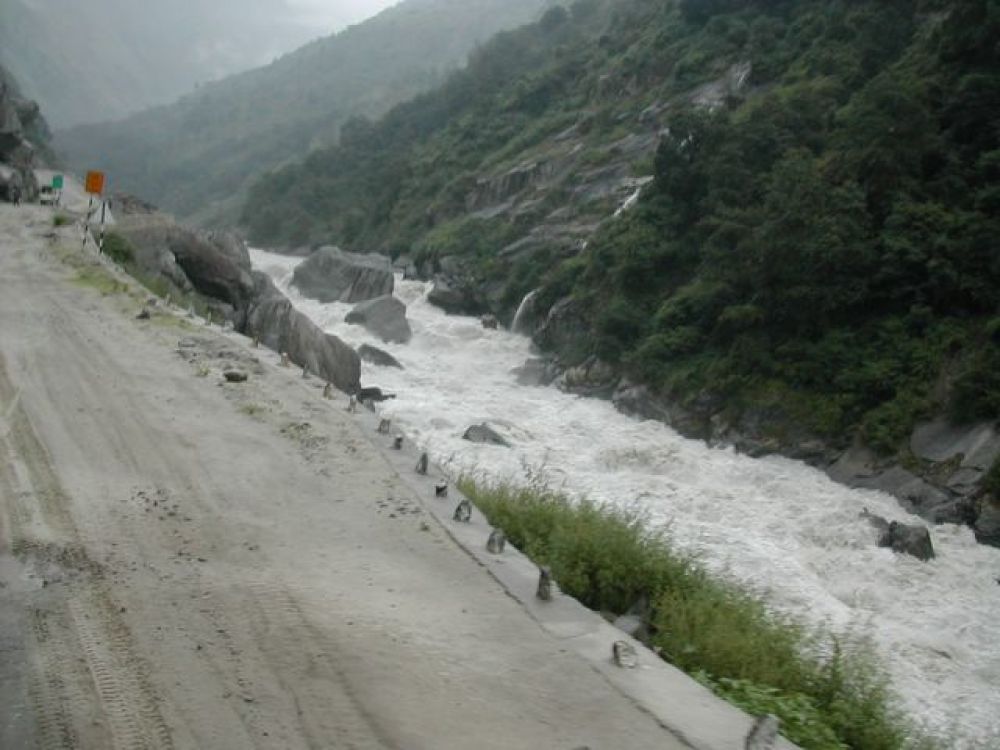

The Lakshman Ganga River, which flows through the rugged terrains of the Garhwal Himalayas in Uttarakhand, is not just a natural wonder but also an integral part of the spiritual landscape of India. This region, with Hemkunt Sahib as a significant highlight, has steadily grown as a pilgrimage and tourism spot over the years.
Hemkunt Sahib is a prominent Sikh Gurudwara that is associated with the tenth Sikh Guru, Guru Gobind Singh. According to Sikh tradition, it is the place where he meditated in his previous life. The Gurudwara, nestled at an altitude of about 4,600 meters above sea level, by the serene Lokpal Lake and surrounded by seven majestic peaks, became accessible to the larger public post the mid-20th century.
The area was relatively obscure in terms of global tourism until the Sikh community undertook efforts to build a pilgrimage path. This journey to Hemkunt Sahib starts at Govindghat, follows the Lakshman Ganga River, and goes through Ghangaria, from where visitors either trek or take a helicopter ride to reach the shrine.
The history of tourism here is deeply intertwined with religious and spiritual journeys. However, in recent years, the region has seen a surge in trekking enthusiasts and nature lovers who come to witness the breathtaking scenery and flora and fauna of the UNESCO World Heritage site of the Nanda Devi Biosphere Reserve.
In the contemporary scenario, Eco-Tourism and Sustainable Tourism have gained traction. Tourists are now more conscious about preserving the pristine environment of the Himalayas while enjoying its beauty. Guidelines have been put in place to ensure that the region remains unaffected by the negative impacts of tourism.
Another trend catching up is Spiritual Tourism, as people not just embark on the pilgrimage for religious reasons but also to seek personal solace and connection with nature. Hemkunt Sahib, therefore, attracts a diverse crowd, from devout pilgrims to solo travelers looking for peace.
The practice of Adventure Tourism is also prominent in the area. The trek to Hemkunt Sahib is considered challenging yet rewarding, and adventure seekers from around the world come to experience the rugged trails, with the trekking season peaking from May to October. Off-the-beaten-path expeditions and the exploration of the less traversed routes around the Lakshman Ganga River are also on the rise.
With the growth of digital platforms and social media, the flow of information about lesser-known destinations like Lakshman Ganga and Hemkunt Sahib has improved significantly. It leads to an increase in Responsible Tourism, where travelers are well-informed about the Dos and Don'ts while visiting such sensitive ecological zones and sacred sites.
The government and local communities are working together to enhance the infrastructure to accommodate tourists without compromising the natural and cultural integrity of the region. Homestays, tourism cooperatives, and local guides have become an essential part of the tourism ecosystem, providing authentic experiences to the visitors and livelihoods to the local population.
In conclusion, the Lakshman Ganga River and Hemkunt Sahib have evolved from remote, spiritual destinations to well-loved and respected tourist spots that offer a blend of devotion, adventure, and natural beauty. The future of tourism in this region looks promising, provided that the balance between visitor interests and conservation remains the top priority.